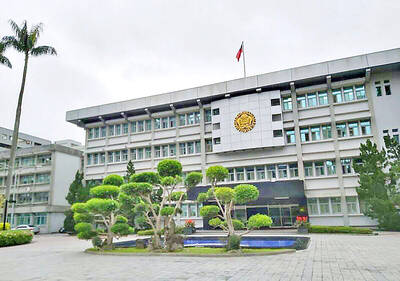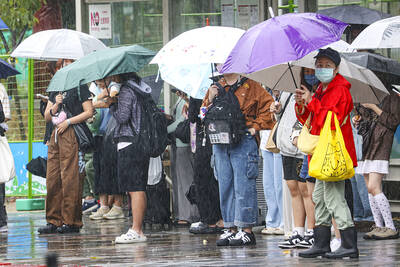Minister of Transportation and Communications Mao Chi-kuo (毛治國) yesterday said the ministry would begin preparing to deal with typhoon disasters as soon as the Central Weather Bureau issues any sea alert.
“Our staff should be on high alert from the very first rain cloud they see,” Mao said. “As long as the rainfall reaches a certain level, staff monitoring the bridges and roads will be on alert. We aim for one to three hours of preparation.”
Mao said the ministry was not simply responsible for closing bridges and roads before or after disasters strike, but also aims to form a united front with the Central Weather Bureau, the Water Resources Agency, the Ministry of National Defense and local household registration departments to reduce casualties.
“They will make a list of the elderly, pregnant women, children and disabled residents in a village,” Mao said. “If it is determined that residents in a certain village need to be evacuated immediately, these people should be evacuated first.”
Mao also said that the ministry has changed the standardized procedures for closing bridges after Typhoon Morakot struck the nation in August last year.
“In the past, the Directorate-General of Highways (DGH) would dispatch persons to monitor changes in water levels, and they would close bridges once the water surged to an alert level,” Mao said. “But what we saw last year was that our staff could potentially monitor the wrong bridge. The bridges we monitored at the head of a river did not collapse, whereas those down stream were washed away by flooding.”

The German city of Hamburg on Oct. 14 named a bridge “Kaohsiung-Brucke” after the Taiwanese city of Kaohsiung. The footbridge, formerly known as F566, is to the east of the Speicherstadt, the world’s largest warehouse district, and connects the Dar-es-Salaam-Platz to the Brooktorpromenade near the Port of Hamburg on the Elbe River. Timo Fischer, a Free Democratic Party member of the Hamburg-Mitte District Assembly, in May last year proposed the name change with support from members of the Social Democratic Party and the Christian Democratic Union. Kaohsiung and Hamburg in 1999 inked a sister city agreement, but despite more than a quarter-century of

The Ministry of Foreign Affairs (MOFA) yesterday expressed “grave concerns” after Singaporean Prime Minister Lawrence Wong (黃循財) reiterated the city-state’s opposition to “Taiwanese independence” during a meeting with Chinese Premier Li Qiang (李強). In Singapore on Saturday, Wong and Li discussed cross-strait developments, the Singaporean Ministry of Foreign Affairs said in a statement. “Prime Minister Wong reiterated that Singapore has a clear and consistent ‘one China’ policy and is opposed to Taiwan independence,” it said. MOFA responded that it is an objective fact and a common understanding shared by many that the Republic of China (ROC) is an independent, sovereign nation, with world-leading

The Ministry of Justice Investigation Bureau (MJIB) has been investigating nine shell companies working with Prince Holding Group, and the Taipei District Prosecutors’ Office is seeking further prosecution of alleged criminals, a source said yesterday. The nine companies and three Taiwanese nationals were named by the US Department of the Treasury’s Office of Foreign Assets Control (OFAC) on Oct. 14 as Specially Designated Nationals as a result of a US federal court indictment. Prince Holding founder Chen Zhi (陳志) has been charged with fraud, conspiracy, money laundering and overseeing Prince Holding’s suspected forced-labor camps in Cambodia, the indictment says. Intelligence shared between Taiwan,

COOLING OFF: Temperatures are expected to fall to lows of about 20°C on Sunday and possibly 18°C to 19°C next week, following a wave of northeasterly winds on Friday The Central Weather Administration (CWA) on Sunday forecast more rain and cooler temperatures for northern Taiwan this week, with the mercury dropping to lows of 18°C, as another wave of northeasterly winds sweeps across the country. The current northeasterly winds would continue to affect Taiwan through today, with precipitation peaking today, bringing increased rainfall to windward areas, CWA forecaster Liu Pei-teng (劉沛滕) said. The weather system would weaken slightly tomorrow before another, stronger wave arrives on Friday, lasting into next week, Liu said. From yesterday to today, northern Taiwan can expect cool, wet weather, with lows of 22°C to 23°C in most areas,